Abstract
A method of producing red-green and blue-yellow sinusoidal chromatic gratings is used which permits the correction of all chromatic aberrations. A quantitative criterion is adopted to choose the intensity match of the two colours in the stimulus: this is the intensity ratio at which contrast sensitivity for the chromatic grating differs most from the contrast sensitivity for a monochromatic luminance grating. Results show that this intensity match varies with spatial frequency and does not necessarily correspond to a luminance match between the colours. Contrast sensitivities to the chromatic gratings at the criterion intensity match are measured as a function of spatial frequency, using field sizes ranging from 2 to 23 deg. Both blue-yellow and red-green contrast sensitivity functions have similar low-pass characteristics, with no low-frequency attenuation even at low frequencies below 0.1 cycles/deg. These functions indicate that the limiting acuities based on red-green and blue-yellow colour discriminations are similar at 11 or 12 cycles/deg. Comparisons between contrast sensitivity functions for the chromatic and monochromatic gratings are made at the same mean luminances. Results show that, at low spatial frequencies below 0.5 cycles/deg, contrast sensitivity is greater to the chromatic gratings, consisting of two monochromatic gratings added in antiphase, than to either monochromatic grating alone. Above 0.5 cycles/deg, contrast sensitivity is greater to monochromatic than to chromatic gratings.
Full text
PDF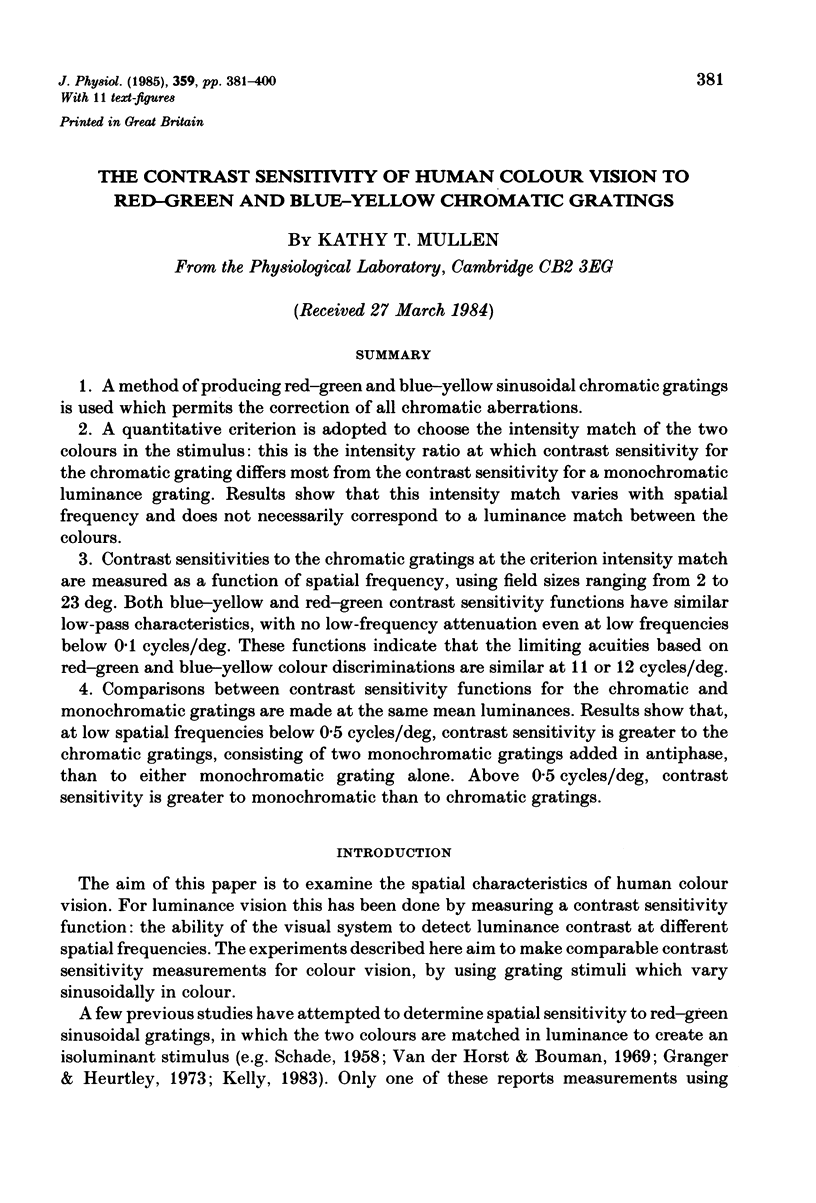
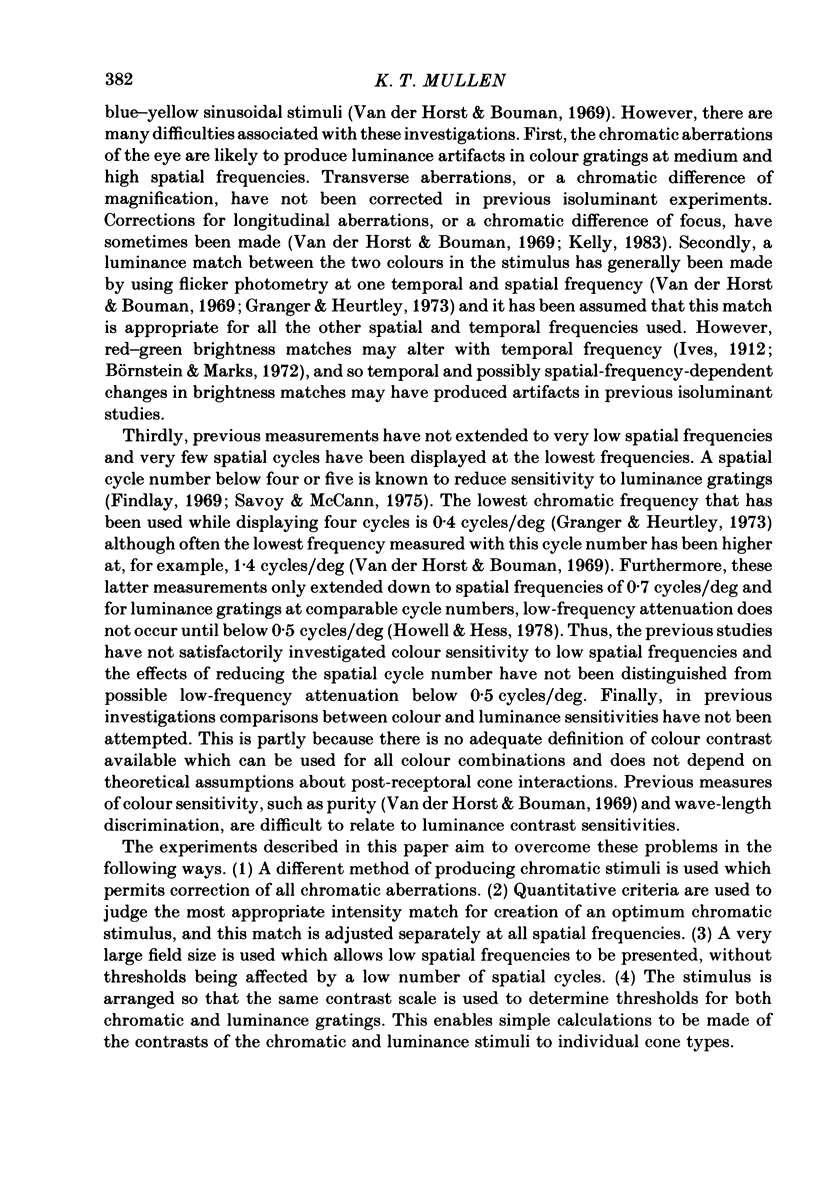
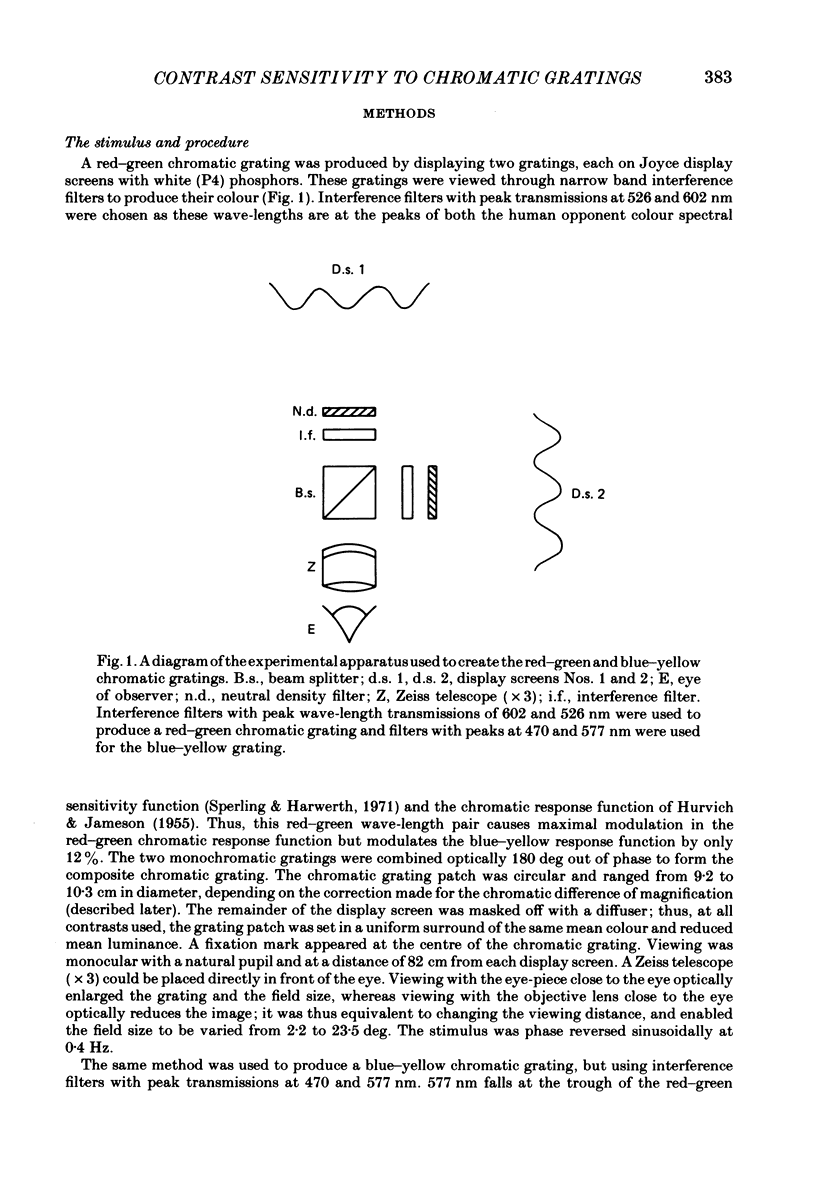
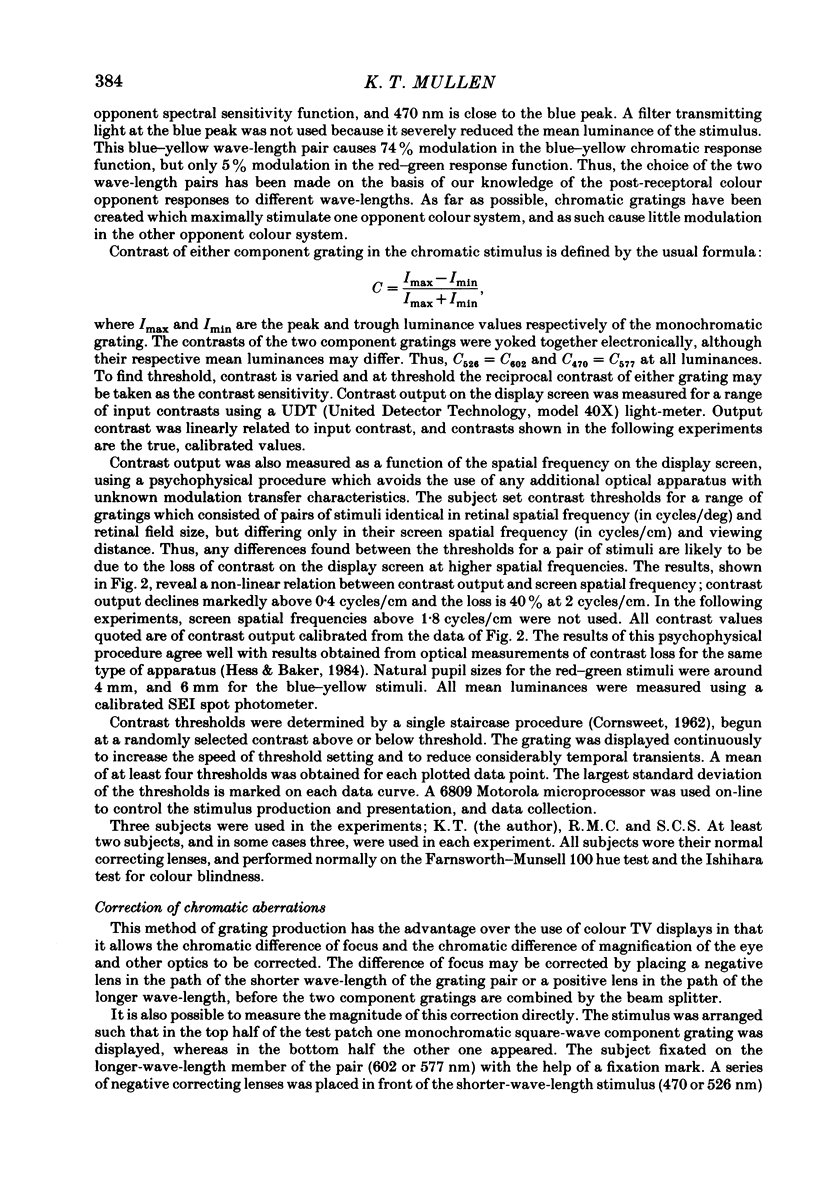
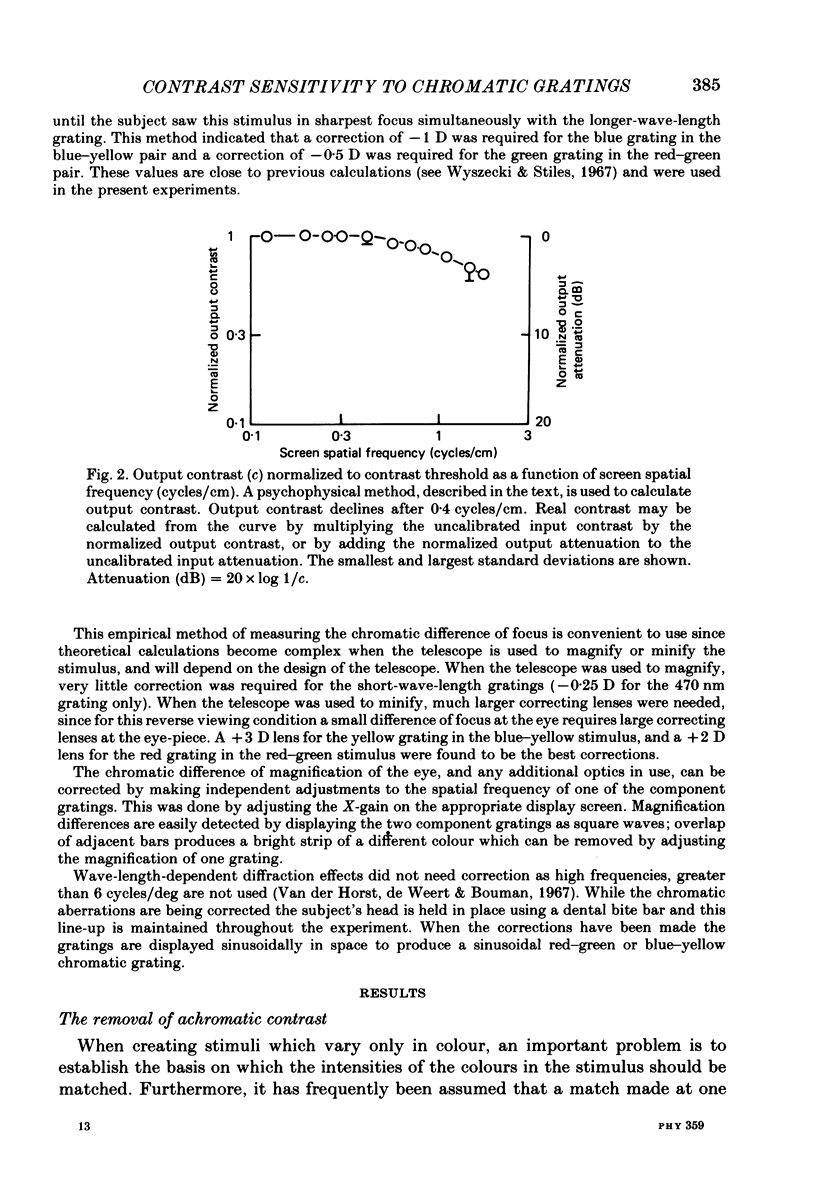
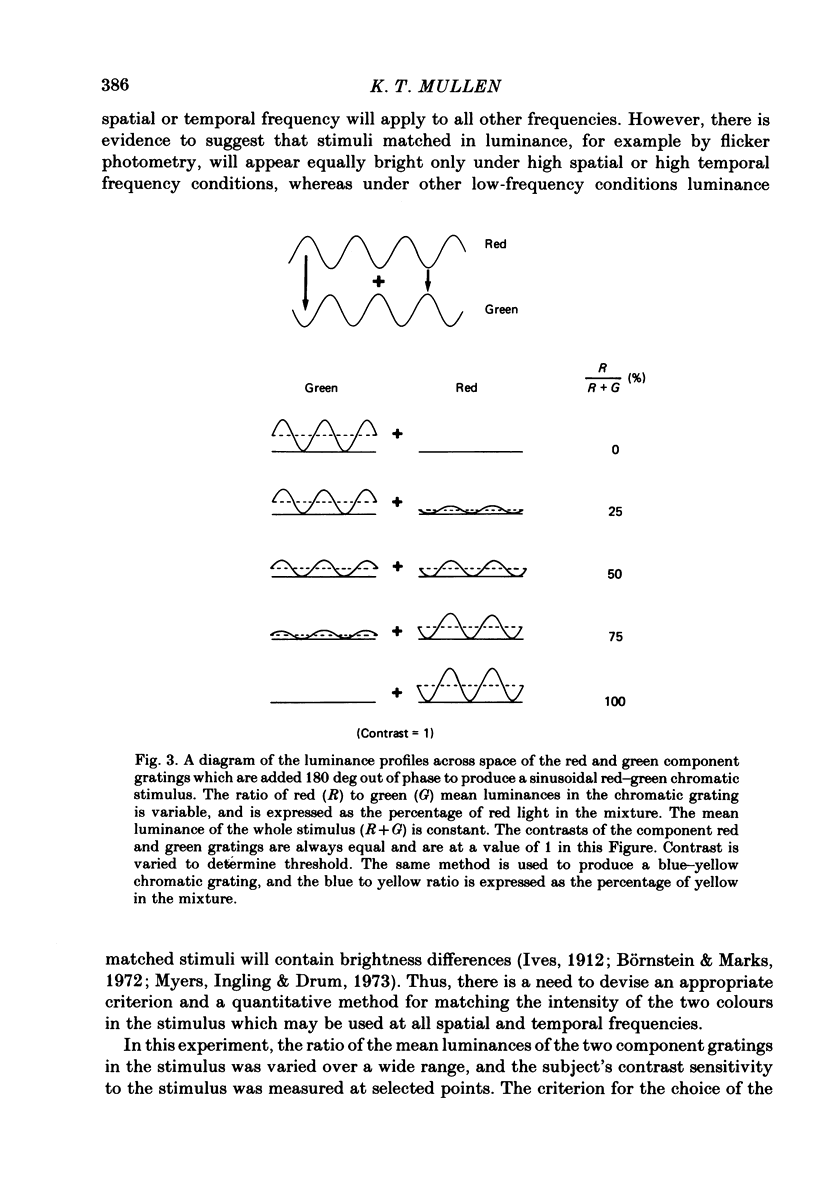
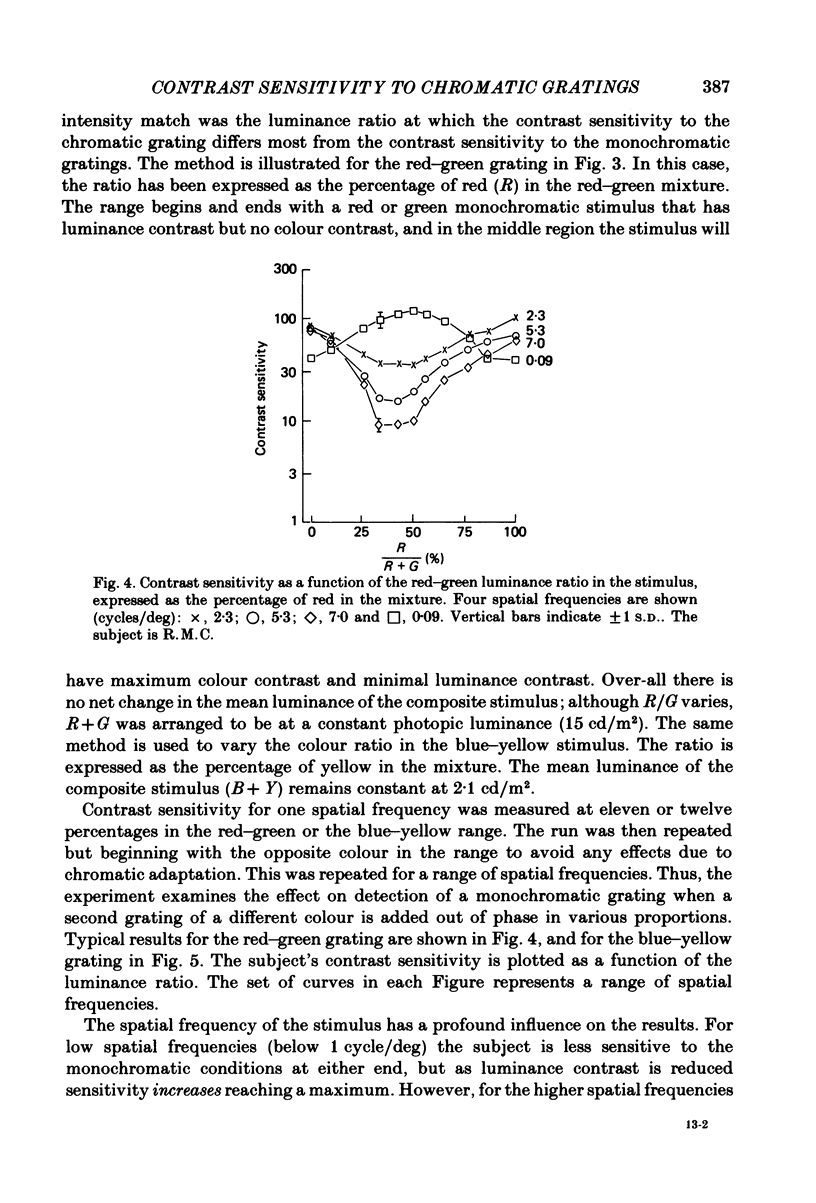
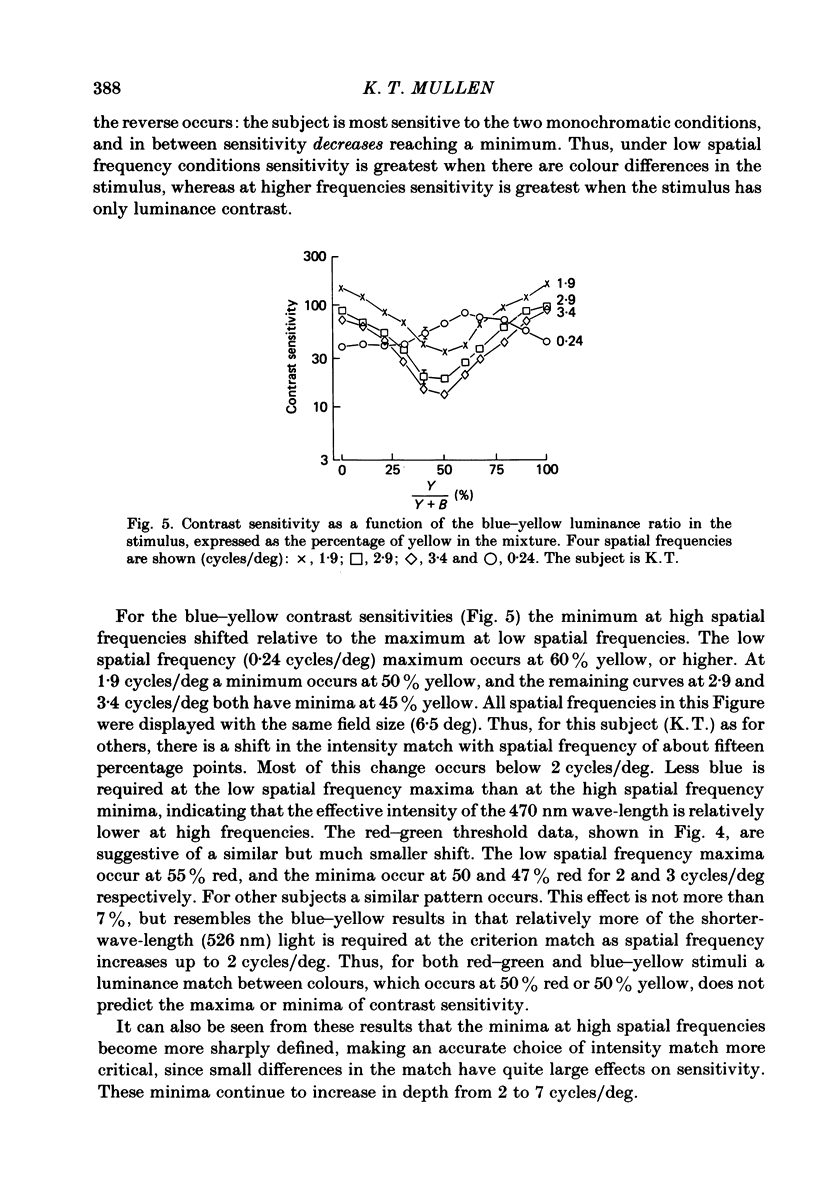
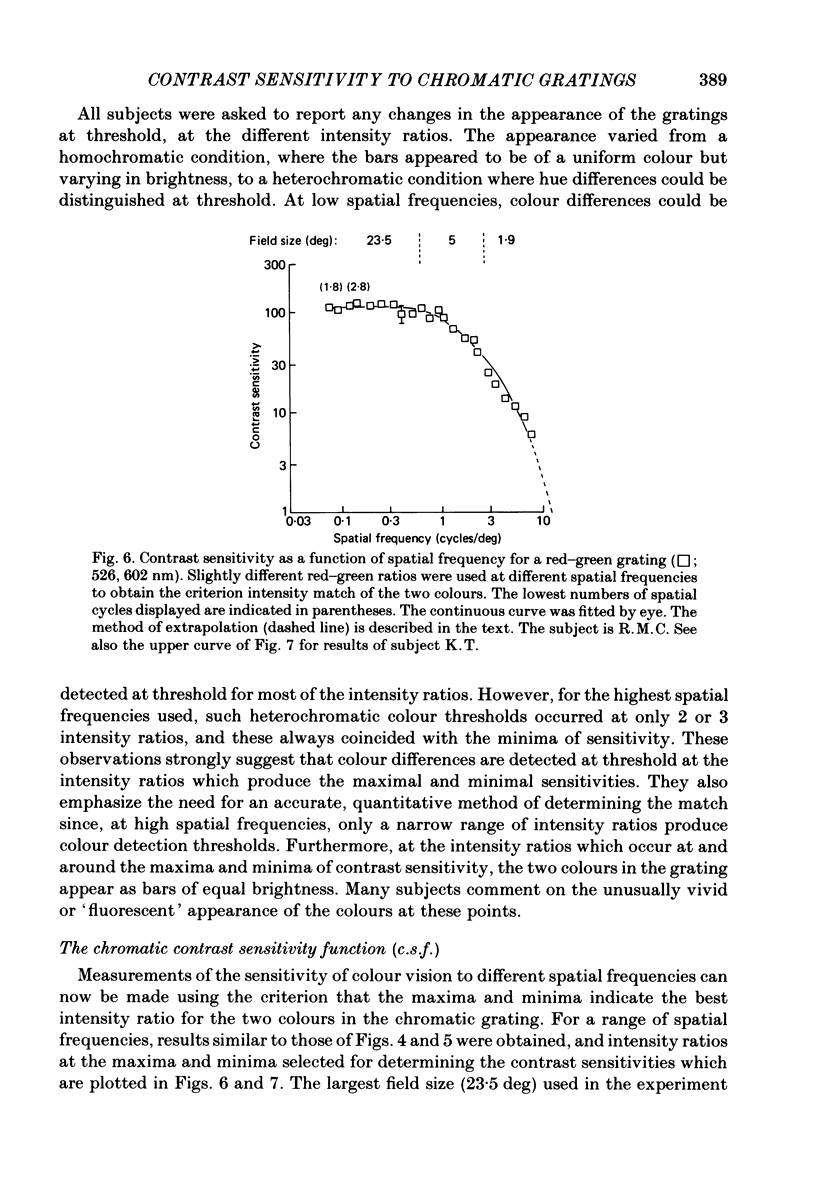
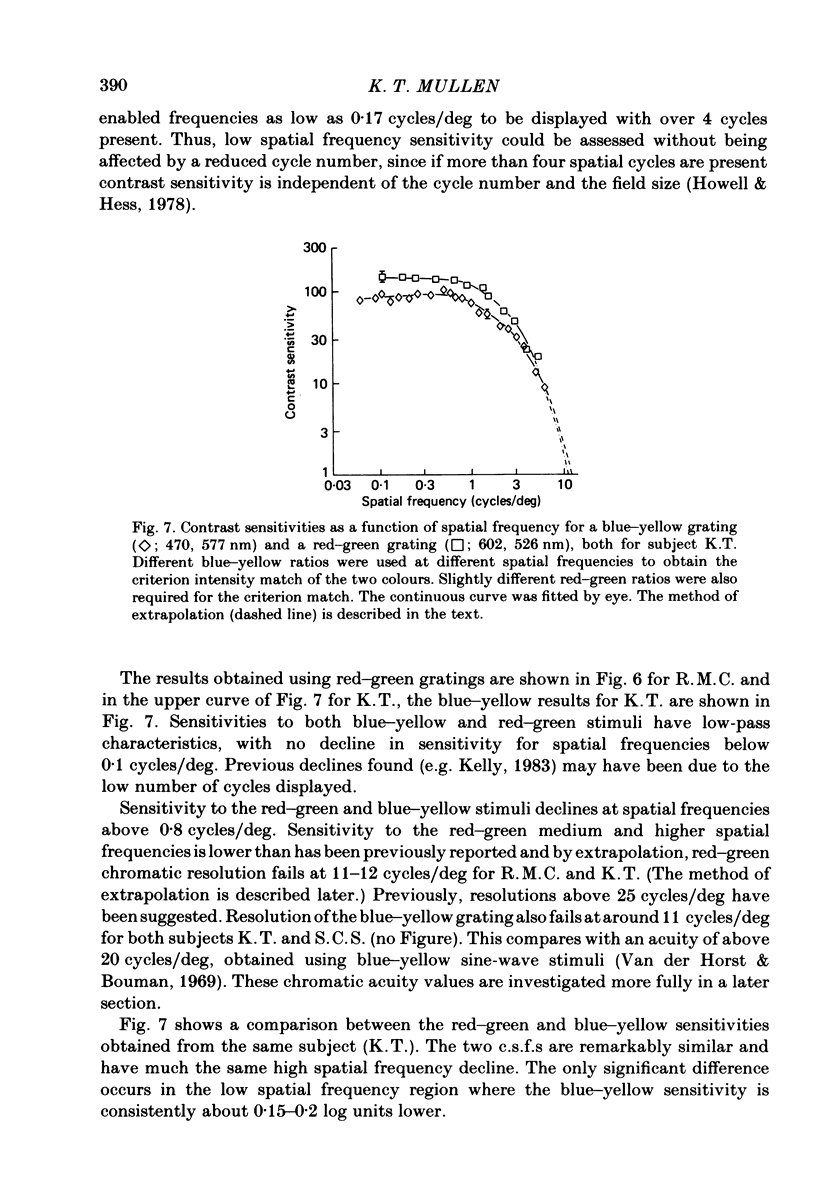
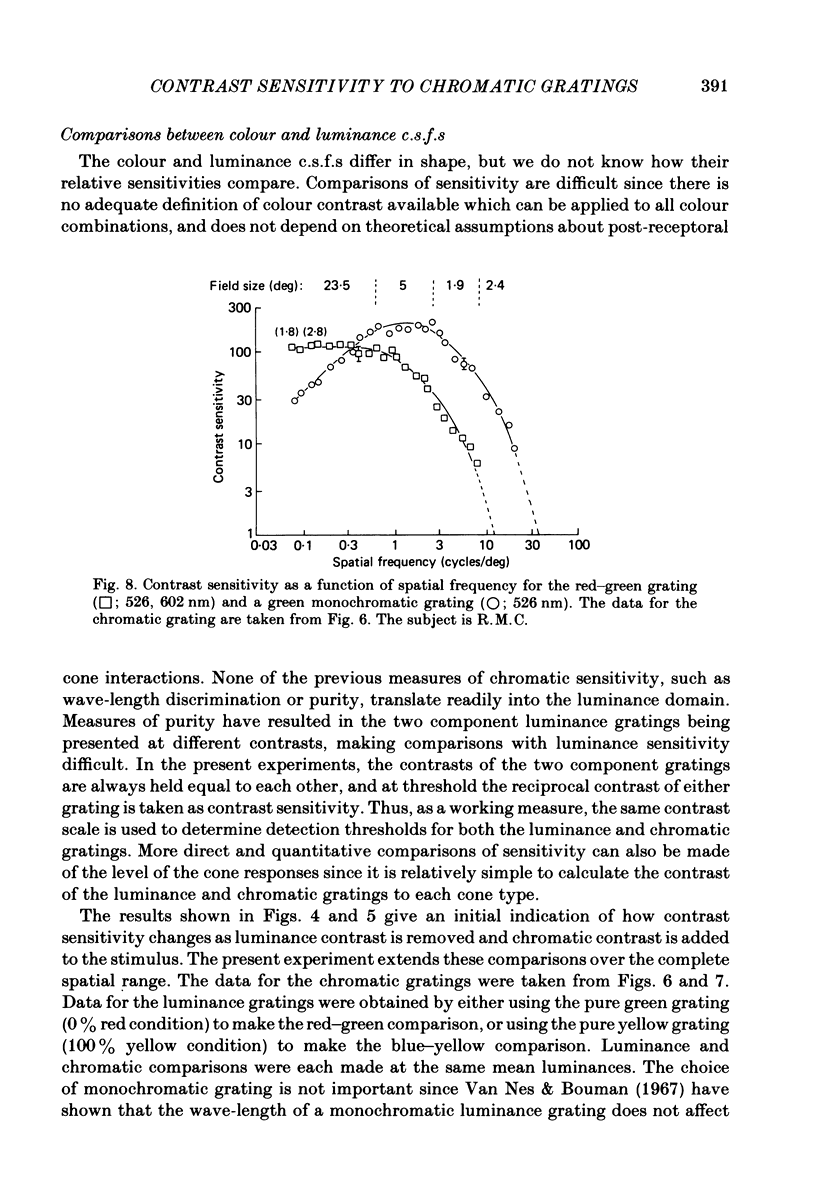
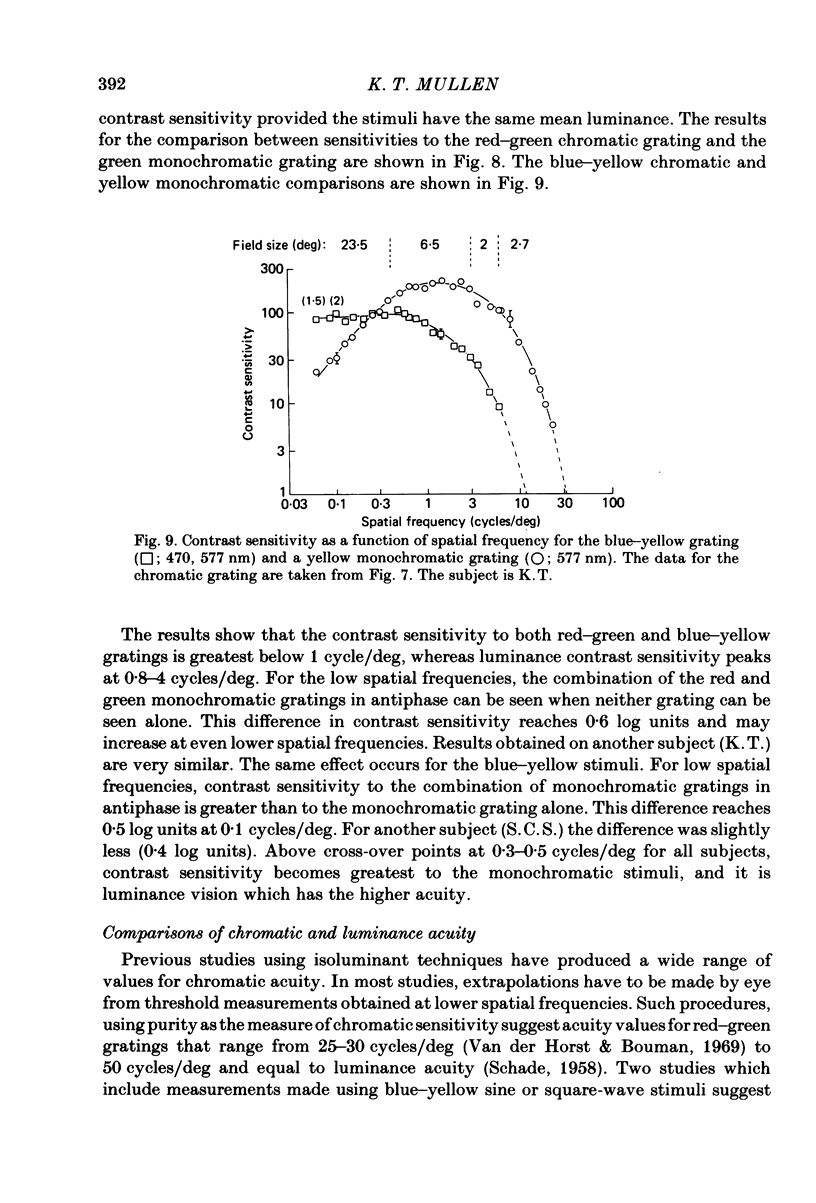
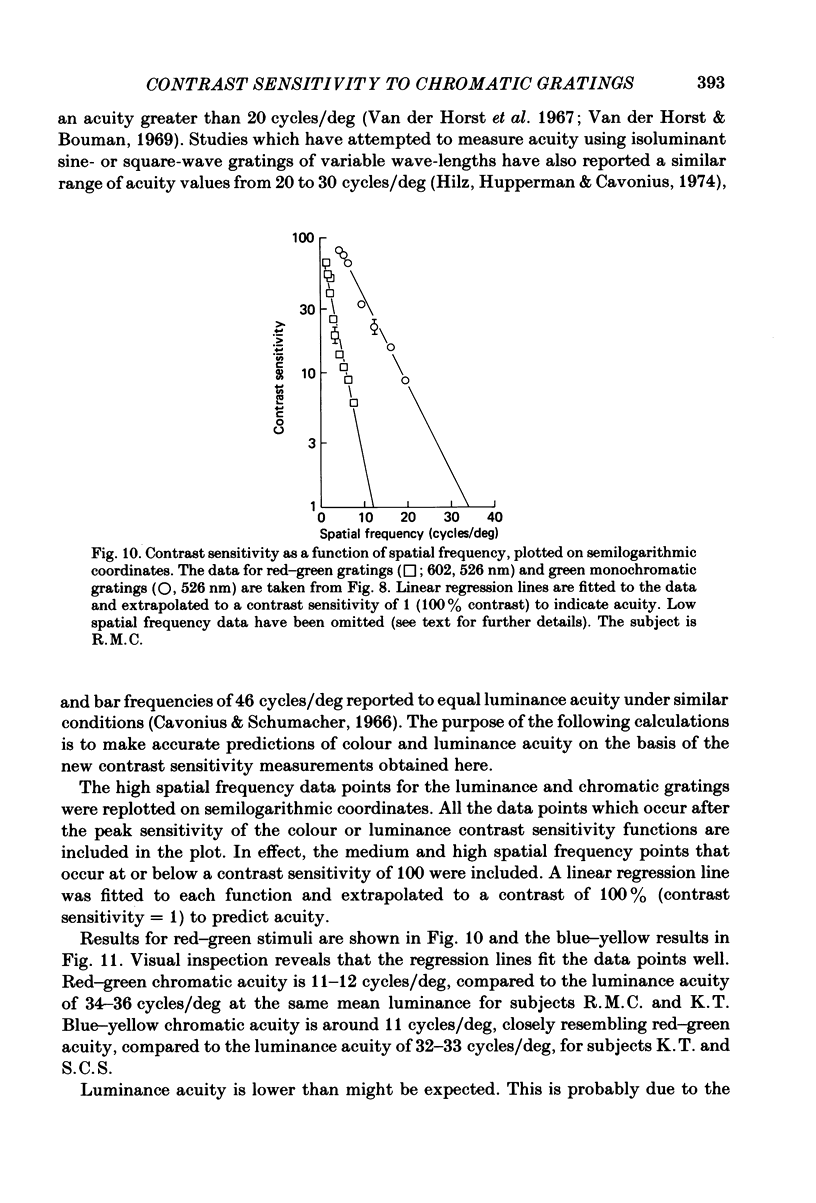
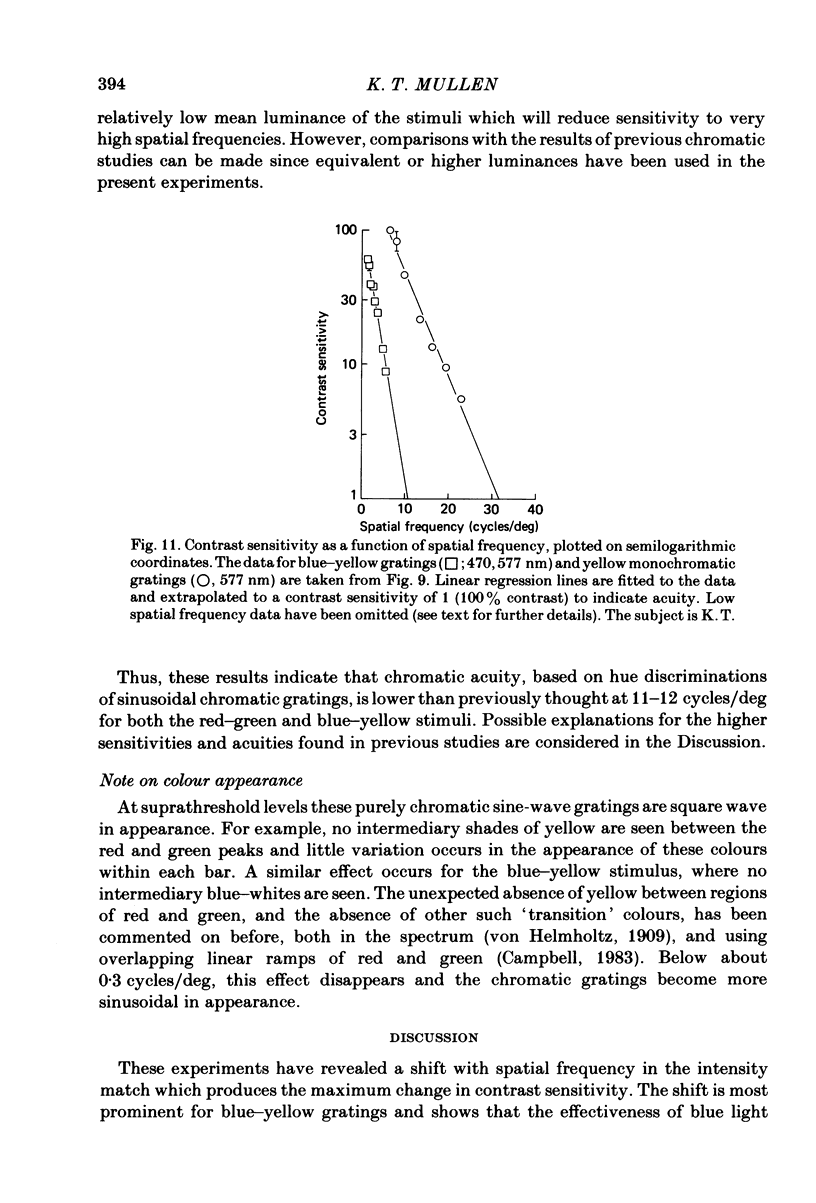
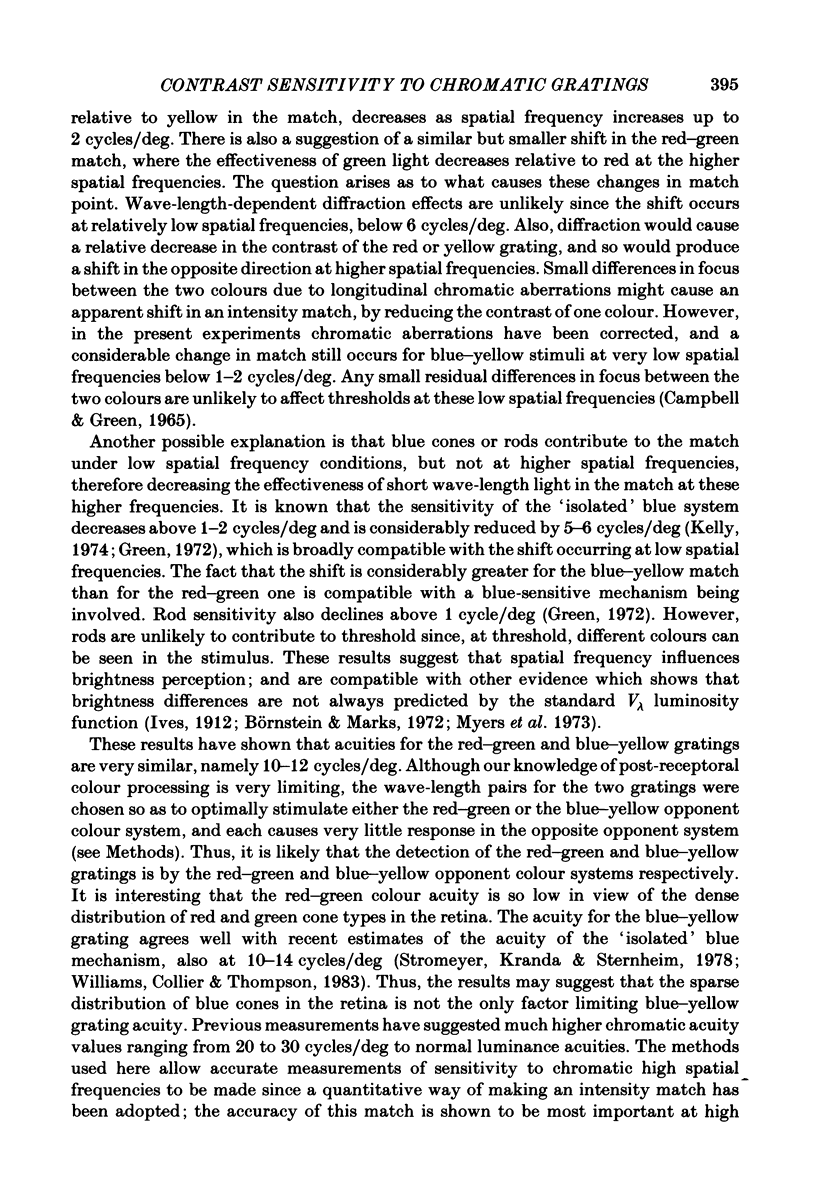
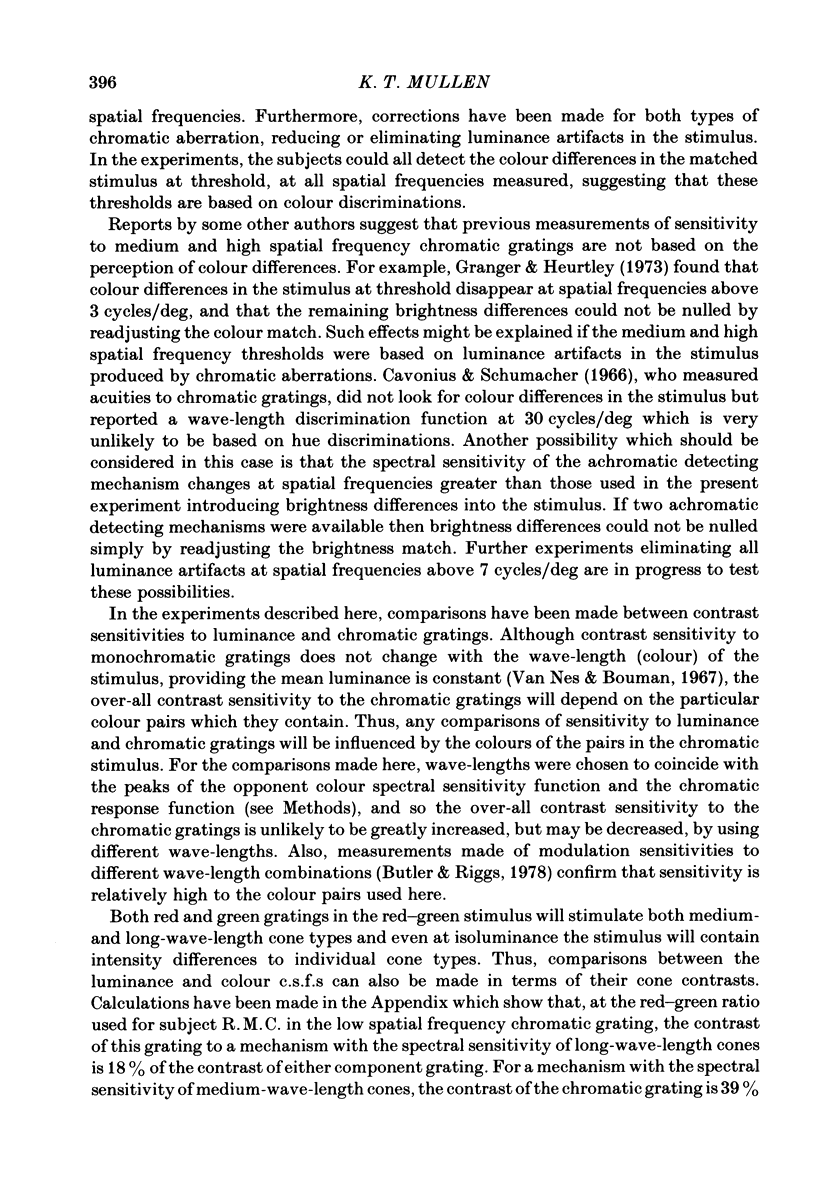
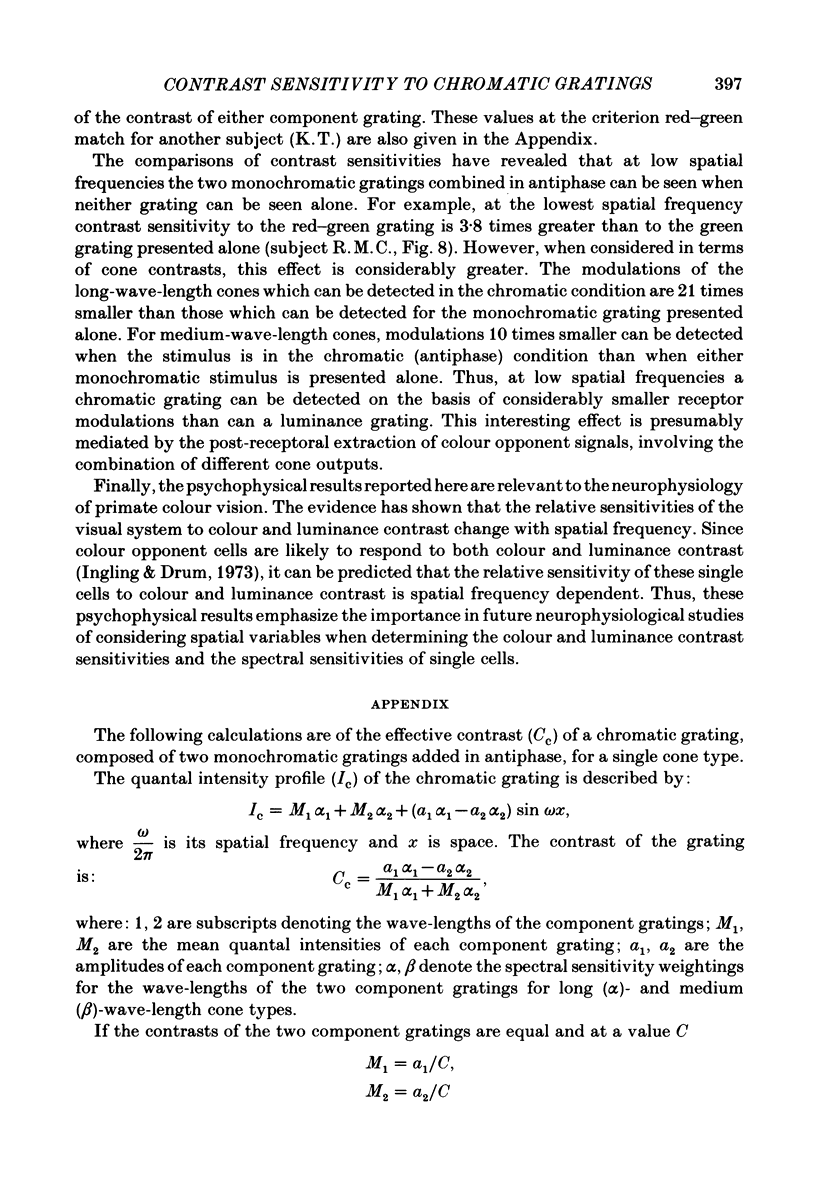

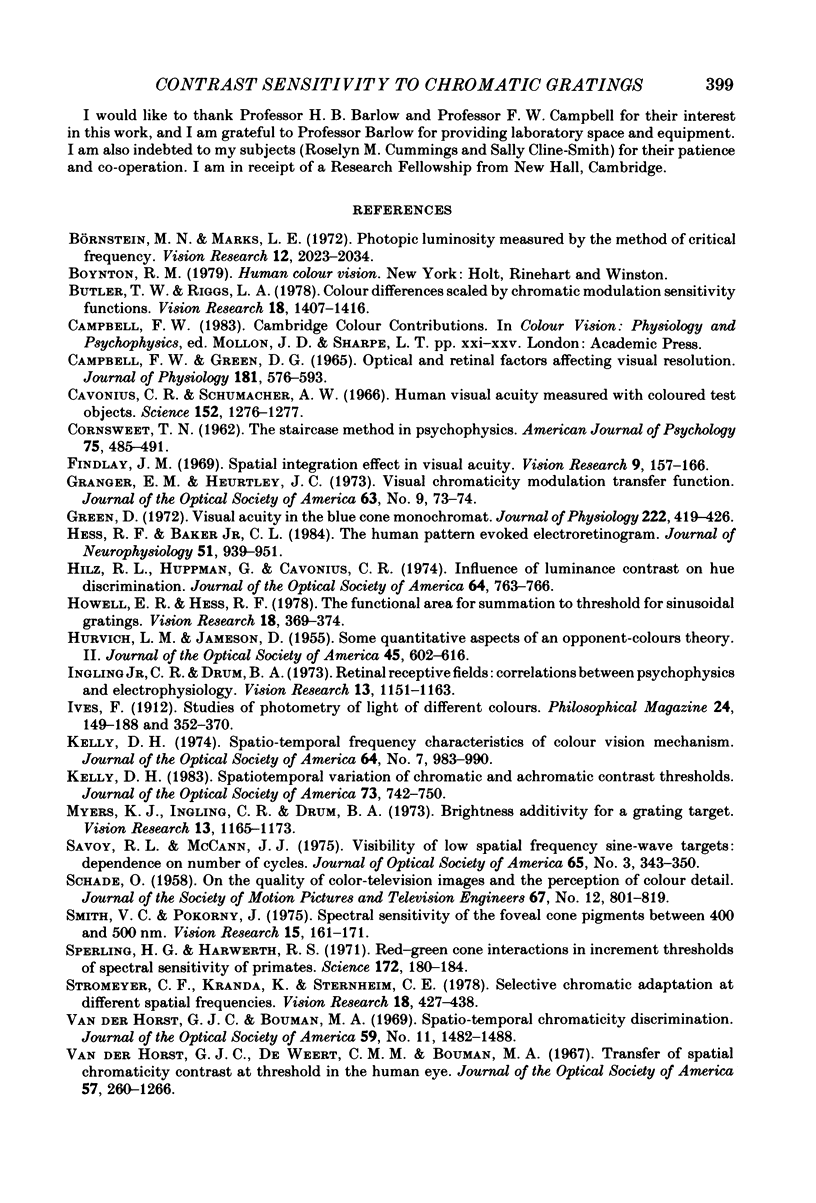
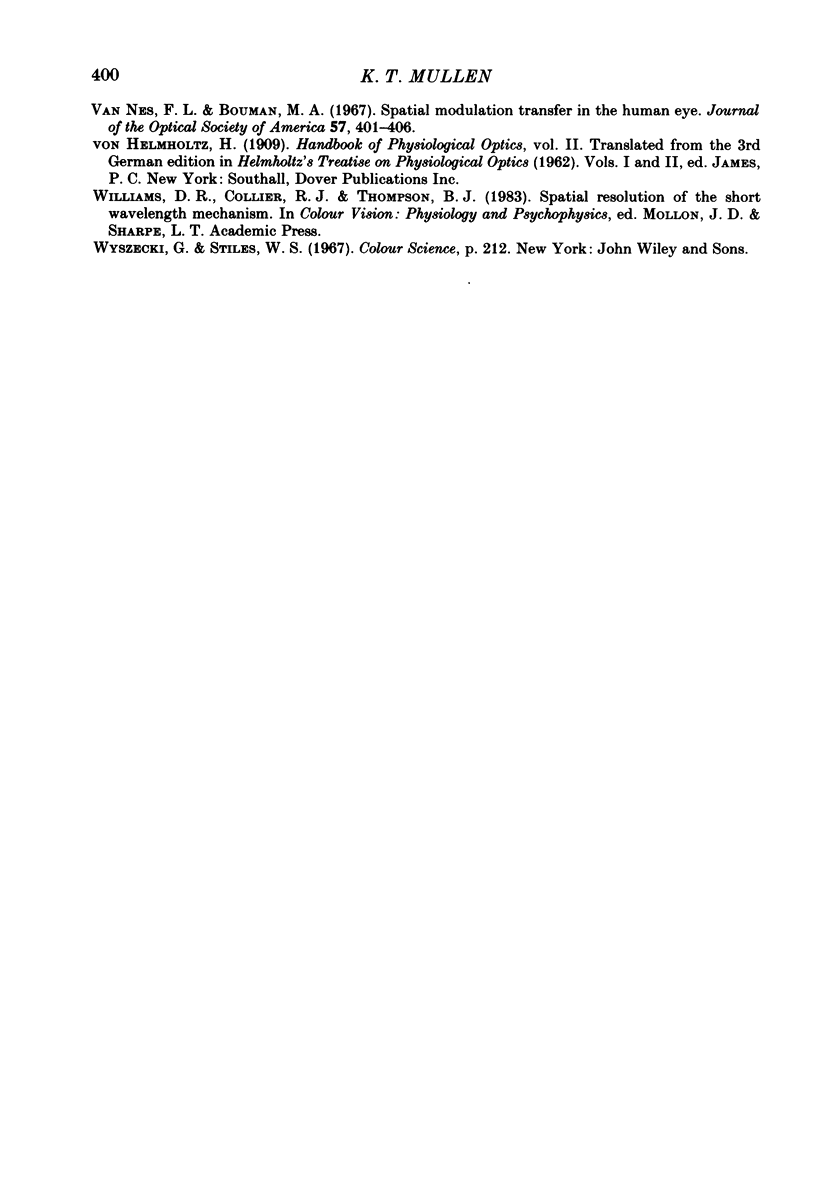
Selected References
These references are in PubMed. This may not be the complete list of references from this article.
- Bornstein M. H., Marks L. E. Photopic luminosity measured by the method of critical frequency. Vision Res. 1972 Dec;12(12):2023–2033. doi: 10.1016/0042-6989(72)90056-9. [DOI] [PubMed] [Google Scholar]
- Butler T. W., Riggs L. A. Color differences scaled by chromatic modulation sensitivity functions. Vision Res. 1978;18(10):1407–1416. doi: 10.1016/0042-6989(78)90234-1. [DOI] [PubMed] [Google Scholar]
- CORNSWEET T. N. The staircrase-method in psychophysics. Am J Psychol. 1962 Sep;75:485–491. [PubMed] [Google Scholar]
- Campbell F. W., Green D. G. Optical and retinal factors affecting visual resolution. J Physiol. 1965 Dec;181(3):576–593. doi: 10.1113/jphysiol.1965.sp007784. [DOI] [PMC free article] [PubMed] [Google Scholar]
- Cavonius C. R., Schumacher A. W. Human visual acuity measured with colored test objects. Science. 1966 May 27;152(3726):1276–1277. doi: 10.1126/science.152.3726.1276. [DOI] [PubMed] [Google Scholar]
- Findlay J. M. A spatial integration effect in visual acuity. Vision Res. 1969 Jan;9(1):157–166. doi: 10.1016/0042-6989(69)90038-8. [DOI] [PubMed] [Google Scholar]
- Green D. G. Visual acuity in the blue cone monochromat. J Physiol. 1972 Apr;222(2):419–426. doi: 10.1113/jphysiol.1972.sp009806. [DOI] [PMC free article] [PubMed] [Google Scholar]
- HURVICH L. M., JAMESON D. Some quantitative aspects of an opponent-colors theory. II. Brightness, saturation, and hue in normal and dichromatic vision. J Opt Soc Am. 1955 Aug;45(8):602–616. doi: 10.1364/josa.45.000602. [DOI] [PubMed] [Google Scholar]
- Hess R. F., Baker C. L., Jr Human pattern-evoked electroretinogram. J Neurophysiol. 1984 May;51(5):939–951. doi: 10.1152/jn.1984.51.5.939. [DOI] [PubMed] [Google Scholar]
- Hilz R. L., Huppmann G., Cavonius C. R. Influence of luminance contrast on hue discrimination. J Opt Soc Am. 1974 Jun;64(6):763–766. doi: 10.1364/josa.64.000763. [DOI] [PubMed] [Google Scholar]
- Howell E. R., Hess R. F. The functional area for summation to threshold for sinusoidal gratings. Vision Res. 1978;18(4):369–374. doi: 10.1016/0042-6989(78)90045-7. [DOI] [PubMed] [Google Scholar]
- Ingling C. R., Jr, Drum B. A. Retinal receptive fields: correlations between psychophysics and electrophysiology. Vision Res. 1973 Jun;13(6):1151–1163. doi: 10.1016/0042-6989(73)90150-8. [DOI] [PubMed] [Google Scholar]
- Kelly D. H. Spatiotemporal variation of chromatic and achromatic contrast thresholds. J Opt Soc Am. 1983 Jun;73(6):742–750. doi: 10.1364/josa.73.000742. [DOI] [PubMed] [Google Scholar]
- Myers K. J., Ingling C. R., Jr, Drum B. A. Brightness additivity for a grating target. Vision Res. 1973 Jun;13(6):1165–1173. doi: 10.1016/0042-6989(73)90151-x. [DOI] [PubMed] [Google Scholar]
- Savoy R. L., McCann J. J. Visibility of low-spatial-frequency sine-wave targets: Dependence on number of cycles. J Opt Soc Am. 1975 Mar;65(3):343–350. doi: 10.1364/josa.65.000343. [DOI] [PubMed] [Google Scholar]
- Smith V. C., Pokorny J. Spectral sensitivity of the foveal cone photopigments between 400 and 500 nm. Vision Res. 1975 Feb;15(2):161–171. doi: 10.1016/0042-6989(75)90203-5. [DOI] [PubMed] [Google Scholar]
- Sperling H. G., Harwerth R. S. Red-green cone interactions in the increment-threshold spectral sensitivity of primates. Science. 1971 Apr 9;172(3979):180–184. doi: 10.1126/science.172.3979.180. [DOI] [PubMed] [Google Scholar]
- Stromeyer C. F., 3rd, Kranda K., Sternheim C. E. Selective chromatic adaptation at different spatial frequencies. Vision Res. 1978;18(4):427–437. doi: 10.1016/0042-6989(78)90053-6. [DOI] [PubMed] [Google Scholar]
- van der Horst G. J., Bouman M. A. Spatiotemporal chromaticity discrimination. J Opt Soc Am. 1969 Nov;59(11):1482–1488. doi: 10.1364/josa.59.001482. [DOI] [PubMed] [Google Scholar]
- van der Horst G. J., de Weert C. M., Bouman M. A. Transfer of spatial chromaticity-contrast at threshold in the human eye. J Opt Soc Am. 1967 Oct;57(10):1260–1266. doi: 10.1364/josa.57.001260. [DOI] [PubMed] [Google Scholar]


